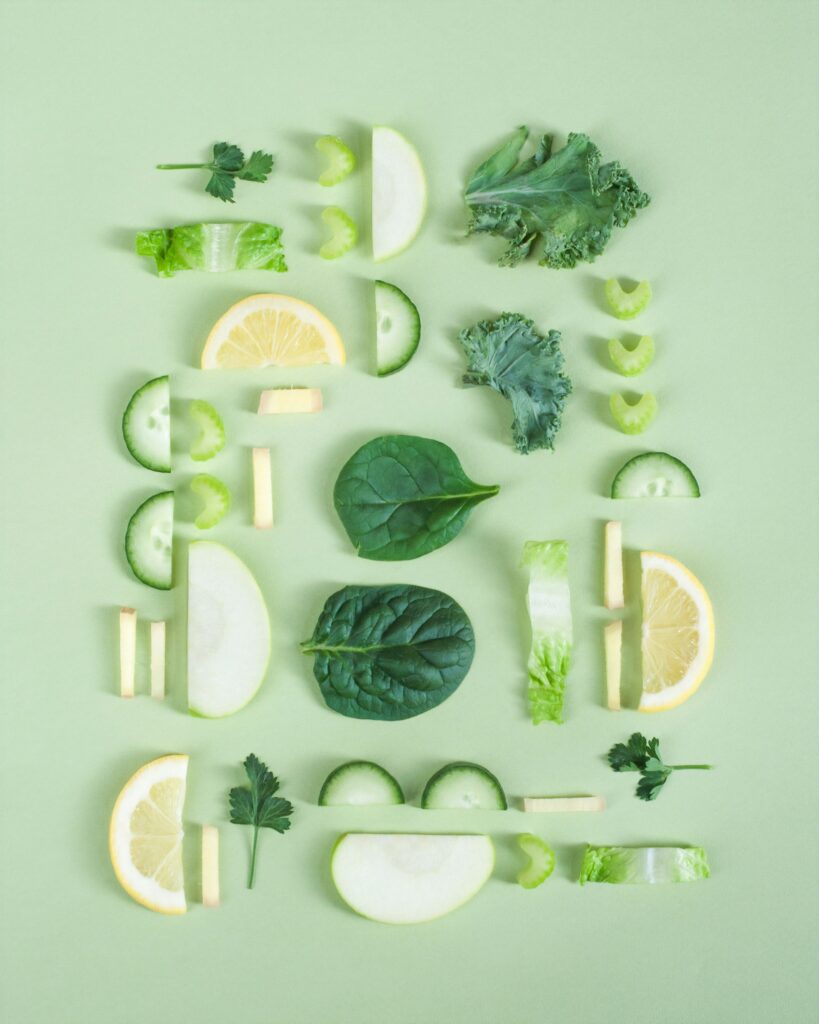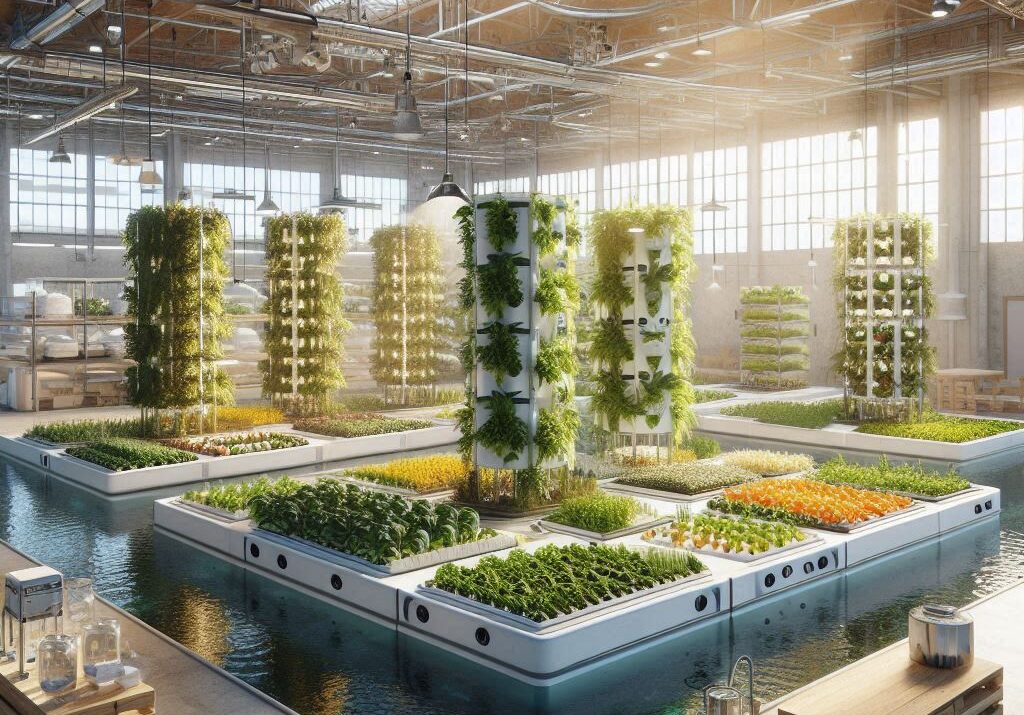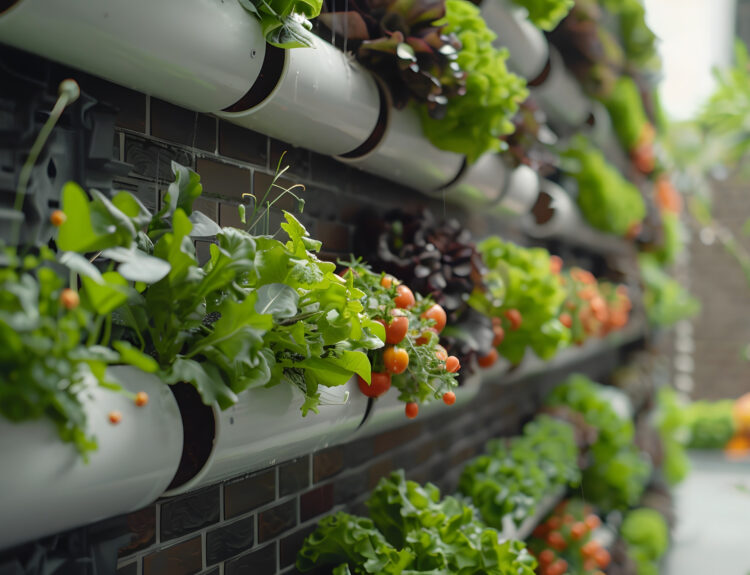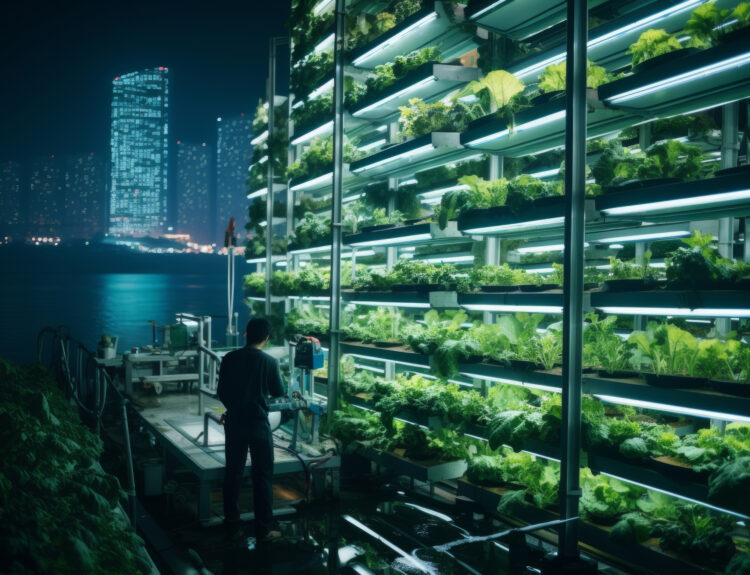If you’re interested in growing fresh vegetables while raising fish in a self-sustaining ecosystem, then this DIY Aquaponics Guide is for you. Aquaponics merges aquaculture (fish farming) with hydroponics (soilless plant growth), creating an efficient, eco-friendly method of food production. Whether you’re a beginner or an enthusiast, this guide will walk you through the essentials of setting up your system. Let’s explore how you can build a successful DIY aquaponics setup at home.
What do you Understand by DIY Aquaponics?
Aquaponics is a system where fish waste provides nutrients for plants, and in return, the plants filter the water, keeping it clean for the fish. This natural cycle makes it an excellent method for sustainable farming. With a structured DIY aquaponics system step by step, you can create a functional setup in various spaces, including backyards, balconies, or even indoors.
Aquaponics systems are categorized into three main types:
- Media-Based Systems
These systems use gravel or expanded clay as a growing medium for plants. The media acts as both a plant support and a biofilter, making it a popular choice for beginners.
- Nutrient Film Technique (NFT)
Water circulates through shallow channels where plant roots absorb nutrients. This method is efficient but requires precise water flow management.
- Deep Water Culture (DWC)
Plants float on rafts in nutrient-rich water, allowing roots to grow directly into the system. This technique is effective for large-scale aquaponics farms.
Selecting the right system depends on your space, resources, and goals.
How to Get Start with DIY Aquaponics?
Setting up a DIY aquaponics system may seem daunting, but with the right approach, anyone can do it. It involves combining a fish habitat with a plant-growing system that benefits from the fish waste.
Aquaponics relies on a symbiotic relationship between fish, plants, and bacteria. Fish produce waste, which breaks down into ammonia. Beneficial bacteria convert ammonia into nitrates, which plants use for growth. The plants, in turn, filter the water before it returns to the fish tank. This cycle creates a balanced ecosystem with minimal external input.
What Does it Mean by DIY Aquaponics System Step-by-Step?

Building an aquaponics system requires careful planning. Here’s how you can create an effective DIY aquaponics setup at home.
- Choosing the Right Location
Choose a spot that gets adequate sunlight, as plants need sufficient light to grow. If you’re setting up indoors, you may need LED grow lights. Ensure the area is well-ventilated to prevent excessive algae growth and has access to water and electricity.
- Selecting a Fish Tank
The fish tank should be durable and made of non-toxic materials. Options include plastic barrels, fiberglass containers, IBC totes, or large aquariums. Ensure the tank size is appropriate for the number of fish you plan to raise. Larger tanks help maintain water stability.
- Choosing the Right Fish
| Fish | Features |
Tilapia | Hardy and adaptable, making them ideal for beginners |
Goldfish | Low-maintenance and great for small systems |
Trout | Require cooler water temperatures |
Koi | Decorative and resilient, suitable for large systems |
Catfish | Grow quickly and thrive in various conditions |
- Setting Up the Grow Bed
The grow bed is where your plants will thrive. Use a growing medium such as expanded clay pellets, gravel, or lava rocks. Ensure the bed is deep enough for plant roots to grow. A proper filtration system is necessary to prevent blockages.
- Installing the Water Pump and Filtration System
A pump circulates water from the fish tank to the grow bed. A biofilter helps break down ammonia, while a mechanical filter removes solid waste. Aeration systems keep oxygen levels optimal for both fish and plants.
- Cycling the System
Before adding fish and plants, you must cycle your system to establish beneficial bacteria. This process takes 4-6 weeks and ensures the water has the right balance of nutrients.
Best Plants for DIY Aquaponics


Many leafy greens and herbs flourish in aquaponic systems. Some excellent choices include:
- Lettuce, spinach, and kale for their fast-growing nature.
- Basil, mint, and cilantro, which thrive in aquaponic conditions.
- Tomatoes and peppers, require larger setups but yield great results.
- Strawberries, grow well in vertical or NFT systems.
Avoid root vegetables like carrots and potatoes as they require deep soil.
What to do for DIY Aquaponics Maintenance?
Keeping your DIY aquaponics fish tank and plants healthy requires ongoing care.
- Water Quality Management
Regularly test pH levels, ammonia, nitrites, and nitrates. The ideal pH range is 6.5–7.5. Perform occasional water changes if needed.
- Feeding Your Fish
Provide high-quality fish food, and avoid overfeeding to prevent ammonia buildup. If possible, incorporate natural food sources like worms and algae.
- Controlling Algae Growth
Algae can grow rapidly if exposed to excessive sunlight. Reduce algae by using shade, adding algae-eating fish, or cleaning the tank regularly.
What are the Troubleshooting Common Issues?
Even well-maintained DIY aquaponics setups can encounter challenges. Here’s how to address them:
- Fish Health Problems
If your fish appears stressed or inactive, check water quality parameters. Poor water conditions, sudden temperature shifts, or overfeeding can harm fish health.
- Plant Growth Issues
If plants are yellowing, test for nutrient deficiencies. Adjust fish feeding, increase fish stock, or supplement with organic nutrients if necessary.
- Water Pump Failures
A faulty water pump can disrupt the system. Regularly clean and check pumps to prevent malfunctions.
What are the Benefits of a DIY Aquaponics System?
A DIY aquaponics guide helps you create a sustainable and productive home farming system. Benefits include:
- Water Conservation – Uses 90% less water than traditional gardening.
- Sustainable Food Production – Provides fresh fish and vegetables year-round.
- No Chemical Fertilizers – Organic and eco-friendly.
- Space-Efficient – Can be implemented in small homes and urban settings.
- Educational Value – Teaches children and adults about ecosystems and sustainability.
Conclusion
Creating a DIY aquaponics setup is an exciting and rewarding project that promotes self-sufficiency and sustainability. Whether you’re a beginner or an experienced gardener, this DIY aquaponics guide provides the essential steps to get started. By selecting the right fish, plants, and system design, you can build a thriving ecosystem that supplies fresh food year-round. Ready to begin? Start your aquaponics journey today!
Learn more about sustainable farming here
Related Post:










